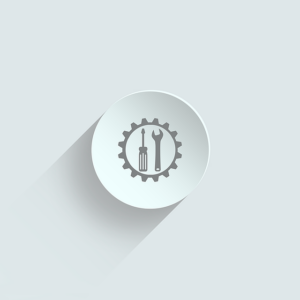Home repair and maintenance are critical for the safe and efficient operation of household appliances. This guide emphasizes the importance of understanding each appliance's specific requirements, including power sources, water or gas connections, and ventilation needs. For instance, ensuring a stable surface and proximity to electrical outlets is crucial for refrigerators and washing machines. Dryers require careful airflow management to prevent fires. Adhering to manufacturer instructions and local building codes is non-negotiable for all installation and repair tasks. For those without DIY experience, professional assistance is recommended due to the expertise required for safe and effective service. By securing connections correctly and following safety protocols, professionals can ensure appliances perform optimally, thus maintaining home functionality and safeguarding occupants. This section also advises on proactive maintenance to prevent future costly repairs, highlighting the importance of regular checks on electrical systems, condensers, and drainage to catch issues before they escalate.
When it comes to home repair and maintenance, understanding how to install and repair appliances is crucial for ensuring your household operates efficiently and safely. This article delves into the essentials of appliance installation and repair, guiding you through the fundamentals, safety measures, and routine maintenance to keep your home running smoothly. From grasping the importance of appliance placement for both efficiency and safety to troubleshooting common installation issues, we’ll cover a step-by-step guide for installing major household appliances, including refrigerators and washing machines. Additionally, we’ll discuss DIY repair tips, when professional assistance is necessary, and how to implement energy-saving strategies to maintain home efficiency and longevity. Whether you’re a homeowner looking to tackle appliance issues independently or seeking insight into professional services for complex tasks, this article serves as a comprehensive resource for home repair and maintenance in the realm of appliance installation and upkeep.
Understanding the Fundamentals of Appliance Installation for Home Repair and Maintenance

When addressing home repair and maintenance, particularly in relation to appliance installation, a solid foundation in the fundamentals is crucial. Proper installation not only ensures the safety and efficiency of your appliances but also extends their lifespan and protects against potential hazards. Homeowners embarking on such projects should familiarize themselves with the specific requirements of each appliance, including its power source, water supply connections, gas lines if applicable, and proper ventilation. For instance, refrigerators and washing machines require a level surface near an electrical outlet and water inlet for optimal performance. Similarly, dryers must be installed with consideration to airflow to prevent lint accumulation, a common fire hazard.
Understanding the installation process also facilitates effective maintenance. Regular checks and minor adjustments can prevent major repairs down the line. It’s important to follow manufacturer guidelines and local building codes when performing any appliance repair or installation. For those who are not confident in their DIY skills, consulting a professional is advisable. Professionals bring expertise and experience, ensuring that each connection is secure and that all safety protocols are adhered to. This meticulous approach during installation lays the groundwork for appliances to operate as intended, contributing to the overall well-being of the home and its occupants.

When addressing home appliance issues, it’s crucial to approach them with a combination of knowledge and caution. Home Repair and Maintenance are integral aspects of owning household appliances, ensuring they function optimally and extend their lifespan. A common mistake homeowners make is attempting complex repairs without proper understanding or training, which can lead to further damage and safety risks. It’s often best to start by reviewing the manufacturer’s guidelines or consulting a professional for guidance. For less intricate problems, homeowners can often resolve issues by troubleshooting common faults, such as resetting circuits, cleaning filters, or replacing worn-out components. Regular maintenance checks, a key component of Home Repair and Maintenance, involve inspecting connections, cleaning condensers, and ensuring proper drainage, which can prevent many malfunctions before they occur. Whether handling a dishwasher that won’t start or a refrigerator that’s not cooling, taking proactive steps in home appliance maintenance is the most effective way to minimize repair needs and keep your household running smoothly.
In conclusion, mastering the fundamentals of appliance installation and repair is a cornerstone of effective home repair and maintenance. As outlined in this article, safety precautions, understanding electrical systems, and adhering to manufacturer guidelines are critical components that ensure the longevity and functionality of your household appliances. By staying informed and skillful in these areas, homeowners can address issues promptly, preventing minor problems from escalating into major disruptions. Remember to always prioritize safety when undertaking any installation or repair task, and consider professional assistance if you’re unfamiliar with the process. With the right knowledge and approach, your appliances will serve you reliably for years to come, contributing to a comfortable and well-maintained living environment.
